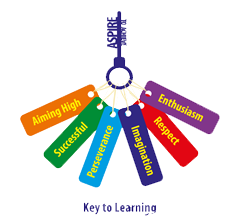Reading and Phonics
Reading and Phonics at Nevill Road Junior School
Our Reading and Phonics Intent: At Nevill Road Junior School we feel passionately about instilling a love of reading in all of our pupils. We value reading as a key life skill, and are dedicated to enabling our pupils to become lifelong readers. Children are encouraged to read a wide range of texts using ambitious vocabulary and we incorporate reading within all areas of the curriculum. Our reciprocal reading approach enables children to discuss texts with confidence using key skills and knowledge to develop their understanding. Our reading scheme follows on from the Infant School to ensure continuity and Phonics are taught to those children who continue to need this approach to develop their reading skills.
At Nevill Road Junior School we are committed to ensuring all of our pupils are supported with both reading and writing. We value reading and writing as a key life skill, and are dedicated to enabling our pupils to become lifelong readers and writers. We have the same high expectations for all learners, including those with SEND in Phonics. Our approach to teaching phonics is through using a systematic approach. Our Phonics scheme builds on what they have already learned from the Infant School to ensure continuity and closing the gaps further.
We aim for all pupils to:
? become confident, fluent readers using skills such as segmenting, blending and word recognition skills.
? build upon the key skills and knowledge that the children have learnt at the Infants School in order for all children to access the National Curriculum.
? apply their phonic knowledge to reading and writing.
Please see the following document to see the scheme of work that we use to teach and assess phonics:
https://phonicsinternational.com/

Love for Reading
At Nevill Road Juniors we encourage children to read when ever possible. Through funding from the Friends of Nevill Road, we have created a brand new libraray area. Our librarians have done a fantastic job of keeping the area well looked after as well as listening to other chidlren read from across the school. Children have visited Stockport's Plaza to meet famous authors and hear extracts from their latest books. This has included Lauren Childs, Jequeline Wilson and Francesca Simon. We have also been involved in the Stockport Children's Book Awards with children from Nevill Road featuring in their celebration film.
50 Book Challenge
To encourage our children to read a wide range of books we have introduced the 50 Books Challenge. This follows on from our structured and progressive colour band sytem. The books on each list are a range of fiction, non-fiction, some well-known classics and more recent authors. In order for our children to have access to a wide variety of texts, we are building up a set of all the books on each of the reading lists, which can be found in the school library. This means that every child can access the books and some will be read in class by the class teachers as well as used for writing hooks in English lessons. Awards will be presented when the children have read 10, 20, 30, 40 and the full 50 books by the end of their year group. The lists have been chosen by the pupils and have a range of texts which include fiction, non fiction, poetry and diversity.
Here is some further information about the challenge:
- There is a list of books for each year group. These can be found on the school website.
- The books can be read in any order independently or with help.
- Whenever your child reads, please record this in their reading diaries.
- If you do not have one of the books at home or in your local library, you can borrow them from school. These can be signed out from the library.
- Book swaps are a great idea and if you would like to donate any of the books to the school, we will happily ensure they are used well. You can read your book at home and in school time during quiet reading.
- Reading a great book is a reward in itself but we have extra prizes as well!
Reading is a great way to spend time together as a family. In order to help your child read at home, please have a look at the Reading Gem Questions, which will enable your child to have a greater understanding of the text they are reading.
1. Encourage your child to read
Reading helps your child’s wellbeing, develops imagination and has educational benefits too. Just a few minutes a day can have a big impact on children of all ages.
2. Read aloud regularly
Try to read to your child every day. It’s a special time to snuggle up and enjoy a story. Stories matter and children love re-reading them and poring over the pictures. Try adding funny voices to bring characters to life.
3. Encourage reading choice
Give children lots of opportunities to read different things in their own time - it doesn’t just have to be books. There’s fiction, non-fiction, poetry, comics, magazines, recipes and much more. Try leaving interesting reading material in different places around the home and see who picks it up.
4. Read together
Choose a favourite time to read together as a family and enjoy it. This might be everyone reading the same book together, reading different things at the same time, or getting your children to read to each other. This time spent reading together can be relaxing for all.
5. Create a comfortable environment
Make a calm, comfortable place for your family to relax and read independently - or together.
6. Make use of your local library
Libraries in England are able to open from 4 July, so visit them when you’re able to and explore all sorts of reading ideas. Local libraries also offer brilliant online materials, including audiobooks and ebooks to borrow. See Libraries Connected for more digital library services and resources.
7. Talk about books
This is a great way to make connections, develop understanding and make reading even more enjoyable. Start by discussing the front cover and talking about what it reveals and suggests the book could be about. Then talk about what you’ve been reading and share ideas. You could discuss something that happened that surprised you, or something new that you found out. You could talk about how the book makes you feel and whether it reminds you of anything.
8. Bring reading to life
You could try cooking a recipe you’ve read together. Would you recommend it to a friend? Alternatively, play a game where you pretend to be the characters in a book, or discuss an interesting article you’ve read.
9. Make reading active
Play games that involve making connections between pictures, objects and words, such as reading about an object and finding similar things in your home. You could organise treasure hunts related to what you’re reading. Try creating your child’s very own book by using photos from your day and adding captions.
10. Engage your child in reading in a way that suits them
You know your child best and you’ll know the best times for your child to read. If they have special educational needs and disabilities (SEND) then short, creative activities may be the way to get them most interested. If English is an additional language, encourage reading in a child’s first language, as well as in English. What matters most is that they enjoy it.
 Nevill Road Junior School
Nevill Road Junior School




























